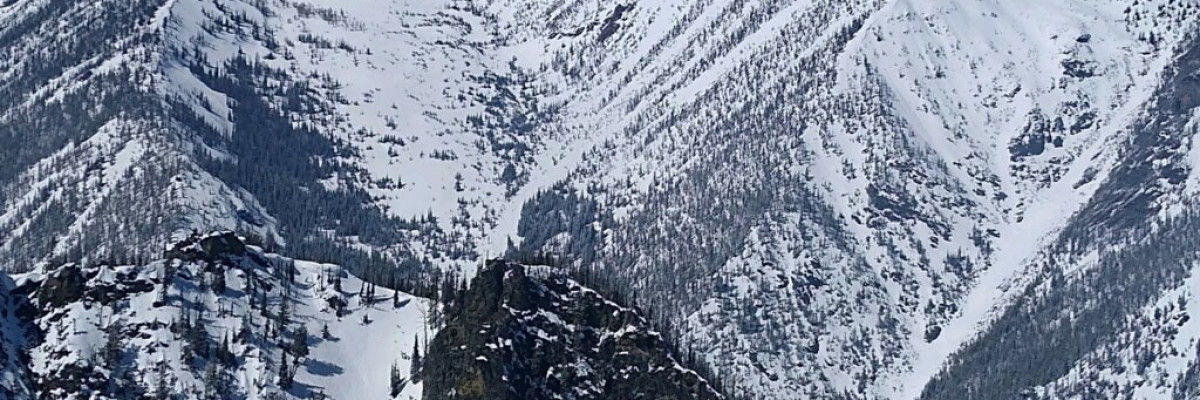The avalanche danger is LOW this morning and MODERATE this afternoon in the west central Montana backcountry. Warming temperatures increase the avalanche danger this afternoon.
Good morning, this is Travis Craft with the West Central Montana avalanche advisory for March 17, 2020. Today’s advisory is sponsored by Krispy Kreme. This advisory does not apply to operating ski areas, expires at midnight tonight, and is the sole responsibility of the U.S. Forest Service.
Weather and Snowpack
Mountain temperatures range from 17 F to 25 F in the region. In the Bitterroot, winds are 11 mph with gusts of 14 out of the SSE. In the northern part of the advisory area, winds are 14 mph and gusting 19 mph out of the W.
Yesterday, we found a reasonably stable snowpack throughout the advisory area. Cornices are very large, and a cornice fall in the last couple of days triggered a small slab avalanche in the bass creek drainage. In the Rattlesnake, skier triggered, and natural loose wet avalanches were the primary concern.(video) Near Lake Dinah stability was good, and loose wet avalanches on sun-exposed slopes were the main problem.
Overnight temperatures dropped into the high teens or twenties. Temperatures will increase into the mid 40’s today. Look for rollerballs and pinwheels on sun-exposed slopes. These will be clues to find more sheltered and shadier aspects. True North slopes are still holding dry snow above 6500 feet.
The primary avalanche concern is loose wet avalanches in the afternoon. Warm temperatures on sun-exposed slopes will increase the avalanche danger today. Rollerballs are clues to find shadier slopes.
The second avalanche problem is cornice fall. Warming temperatures will weaken cornices. Give these giants a wide berth and travel quickly below them.
Bottom Line
Use normal caution to travel in avalanche terrain today. Continue to practice safe travel protocols in case you find an exception to a generally stable snowpack. Travel one at a time in avalanche terrain, carry a beacon, shovel, and probe, and stay alert for signs of instability. Dig a pit. Look for red flags. As the snow heats up during the day, be aware of the increasing likelihood of loose wet avalanches, especially if you notice pinwheels, rollerballs, or if you are sinking up past your boots in heavy, wet snow. Pay attention to weather changes that will increase avalanche danger.
Your observations are extremely helpful! If you get out, please take a minute to fill out the observation form on our website (missoulaavalanche.org), or shoot us a quick email at [email protected].
Ski and ride safe.
























